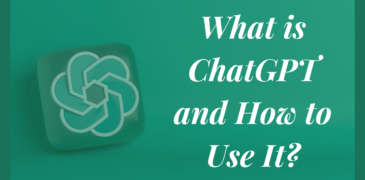Step into the enchanting realm of ChatGPT, an exceptional AI language model that has transformed the way we interact with computers. Fueled by OpenAI’s revolutionary GPT-3.5 architecture, ChatGPT seamlessly merges cutting-edge natural language processing and machine learning to offer an unmatched conversational adventure. This article is your gateway to understanding what ChatGPT is and uncovering its boundless potential across various domains. Furthermore, we will provide you with a comprehensive guide on how to use ChatGPT effectively, from initiation to optimizing your interactions. Brace yourself for an enthralling voyage as we unravel the wonders of ChatGPT!
What is ChatGPT?
ChatGPT is an artificial intelligence language model designed to comprehend and generate human-like responses. Developed by OpenAI, it stands for “Conversational Generative Pre-trained Transformer 3.5.” At its core, ChatGPT is built on the Transformer architecture, which enables it to process and analyze vast amounts of data, making it highly proficient in language understanding and generation.
How Does ChatGPT Work?
- ChatGPT’s exceptional capabilities stem from the enormous dataset it has been trained on. This data includes text from books, articles, websites, and other sources, effectively granting it access to an extensive repository of knowledge. During the training process, the model learns patterns, associations, and contexts within this data, enabling it to generate coherent responses based on the input it receives.
- To provide such impressive conversational abilities, ChatGPT uses a combination of pre-training and fine-tuning. Pre-training involves exposing the model to large amounts of text data to acquire a foundational understanding of language. Fine-tuning, on the other hand, narrows down the scope to specific tasks, making it more proficient in providing relevant responses in various contexts.
How to Use ChatGPT?
Using ChatGPT is as simple as typing your queries and receiving AI-generated responses. To get the best results, follow these steps:
- Accessing ChatGPT: OpenAI offers different ways to access ChatGPT, including through its website, API, or various third-party applications that integrate with the model. Some interfaces provide free access with limited functionality, while others may require subscriptions or usage-based payment plans.
- Framing Your Queries: When interacting with ChatGPT, the way you phrase your questions plays a crucial role in receiving accurate and relevant responses. Be clear and concise in your queries, and consider providing context if necessary. If you’re asking a complex question, break it down into smaller parts to improve the model’s understanding.
- Experimenting with Prompts: Experimentation is key to maximizing ChatGPT’s potential. Start with a general prompt, and if the initial response doesn’t meet your expectations, iterate and refine your query. You can experiment with different styles of prompts, such as specifying the tone, asking for creative suggestions, or seeking opinions.
- Using System Messages: Utilize system messages to guide the conversation and influence the behavior of ChatGPT. By instructing the model at the beginning of the conversation, you can set the context or specify the role it should play during the interaction.
- Leveraging User Messages: User messages are the main input for ChatGPT, and they should be phrased in a conversational manner. Feel free to ask follow-up questions to receive more in-depth responses or request clarifications to get precise answers.
- Practicing Iteration: Iteration is essential to fine-tune the responses you receive. By engaging in a back-and-forth dialogue with ChatGPT, you can refine the quality of the conversation and ensure the model better understands your intent.
Applications of ChatGPT
The versatility of ChatGPT makes it applicable in a wide range of industries and use cases. Let’s explore some of the exciting applications where ChatGPT shines:
- Content Creation: ChatGPT serves as a valuable companion for content creators and writers, providing inspiration, generating drafts, and refining ideas. It can help create blog posts, articles, marketing content, and social media posts.
- Programming Assistance: For developers and programmers, ChatGPT can be an invaluable resource. It can assist with coding questions, suggest solutions to programming problems, and even generate code snippets.
- Language Translation: ChatGPT’s language understanding capabilities make it suitable for language translation tasks. It can translate text from one language to another, aiding in cross-lingual communication.
- Educational Support: As a learning tool, ChatGPT can provide explanations, answer academic queries, and offer insights into various subjects, making it a helpful study companion.
- Customer Support: Companies can integrate ChatGPT into their customer support systems to handle routine queries, provide quick assistance, and improve response times.
- Creativity and Storytelling: ChatGPT can be a playground for creativity, engaging users in storytelling, character development, and interactive narratives.
Also read:
How to Effectively use ChatGPT for Content Creation?
Jasper vs ChatGPT: Which one is a better AI based content writing tool?
5 Ways Artificial Intelligence Boosts Employee Productivity
How to use OpenAI for Image Creation? (GUIDE)
FAQs
What is ChatGPT?
ChatGPT is an advanced AI language model developed by OpenAI. It stands for “Conversational Generative Pre-trained Transformer 3.5” and is based on the Transformer architecture. It has been trained on a massive dataset of text from various sources to comprehend and generate human-like responses in conversations.
How does ChatGPT differ from traditional chatbots?
Traditional chatbots are rule-based and follow predefined scripts, limiting their ability to handle complex and context-dependent interactions. In contrast, ChatGPT uses machine learning and natural language understanding to produce more dynamic and contextually relevant responses, enabling more engaging and realistic conversations.
Where can I access ChatGPT?
You can access ChatGPT through OpenAI’s website or API. Additionally, some third-party applications may offer integration with ChatGPT. OpenAI provides both free access with limited functionality and subscription-based plans for more extensive usage.
How do I get started with ChatGPT?
To get started, visit OpenAI’s website or use an integrated application. If you are using the website, you can enter your queries in the provided chatbox. For API access, you can use the provided endpoints to interact with the model programmatically.
What kind of questions can I ask ChatGPT?
You can ask ChatGPT a wide range of questions on various topics. From seeking factual information to brainstorming ideas, discussing complex issues, or even engaging in creative writing prompts – ChatGPT can handle a diverse array of queries.
Can ChatGPT provide accurate information?
ChatGPT’s responses are based on patterns and information from the data it was trained on. While it strives to provide accurate answers, it’s essential to verify critical information from reliable sources, especially for mission-critical or fact-checking purposes.
How do I ensure ChatGPT understands my questions correctly?
To ensure optimal understanding, frame your queries clearly and concisely. You can also provide context and specify the desired tone or style in your prompt. If ChatGPT’s initial response isn’t satisfactory, iterate and refine your query to improve the model’s comprehension.
Can I have a back-and-forth conversation with ChatGPT?
Yes, ChatGPT supports back-and-forth conversations. By engaging in iterative dialogues, you can have extended interactions and guide the conversation to better align with your goals.
Conclusion
ChatGPT represents an extraordinary leap forward in artificial intelligence, bringing us closer to the dream of seamless human-computer interactions. Its ability to understand context and generate coherent responses makes it a versatile tool for various applications. As you venture into the realm of ChatGPT, remember to frame your queries thoughtfully, experiment with prompts, and engage in iterative conversations to optimize your interactions.
The potential applications of ChatGPT span across industries, from content creation and programming assistance to language translation and customer support. As the technology evolves, we can expect even more remarkable use cases to emerge.
In conclusion, ChatGPT opens a world of possibilities for individuals and businesses alike. Its powerful language processing capabilities, combined with human-like conversational skills, make it an invaluable ally in navigating the vast seas of information and creativity. As we embrace this AI marvel, let’s continue to explore, innovate, and harness its potential responsibly to shape a brighter and more efficient future.







